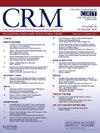Right ventricular-pulmonary arterial coupling in transcatheter structural heart interventions
IF 1.9
Q3 CARDIAC & CARDIOVASCULAR SYSTEMS
引用次数: 0
Abstract
Right ventricular–pulmonary arterial (RV–PA) coupling describes the interaction between right ventricular contractility and pulmonary arterial afterload, offering a comprehensive assessment of right heart function. In the context of structural heart interventions such as transcatheter aortic valve implantation (TAVI), transcatheter edge-to-edge mitral repair (TEER), and transcatheter tricuspid therapies, RV–PA coupling has emerged as a powerful prognostic indicator. Impaired coupling, typically defined using echocardiographic surrogates such as the tricuspid annular plane systolic excursion (TAPSE)/pulmonary artery systolic pressure (PASP) ratio, is consistently associated with increased mortality and heart failure hospitalization. RV–PA coupling also demonstrates dynamic behavior, with potential for improvement following intervention—though persistent uncoupling portends worse outcomes. Despite its clinical promise, significant limitations exist. Commonly used non-invasive indices, while practical, only moderately correlate with gold-standard invasive pressure-volume loop assessments and are subject to measurement variability and lack of standardization. Furthermore, current surrogates do not distinguish between the underlying drivers of uncoupling—whether impaired contractility or increased afterload—each with distinct therapeutic implications. As structural heart interventions expand to broader patient populations, a more refined understanding of RV–PA coupling may enhance risk stratification, procedural planning, and long-term management. Future research should focus on standardizing assessment techniques and establishing evidence-based thresholds to support its routine clinical use.
经导管结构性心脏介入治疗中的右心室-肺动脉耦合。
右心室-肺动脉(RV-PA)耦合描述了右心室收缩力和肺动脉后负荷之间的相互作用,提供了对右心功能的全面评估。在结构性心脏干预的背景下,如经导管主动脉瓣植入(TAVI)、经导管边缘到边缘二尖瓣修复(TEER)和经导管三尖瓣治疗,RV-PA偶联已成为一个强有力的预后指标。偶联受损,通常使用超声心动图替代指标如三尖瓣环平面收缩位移(TAPSE)/肺动脉收缩压(PASP)比来定义,与死亡率和心力衰竭住院率的增加一致相关。RV-PA耦合也表现出动态行为,在干预后有改善的潜力,尽管持续的不耦合预示着更糟糕的结果。尽管其临床前景光明,但仍存在显著的局限性。常用的非侵入性指标虽然实用,但仅与金标准侵入性压力-容量环路评估适度相关,且受测量变异性和缺乏标准化的影响。此外,目前的替代品并没有区分解耦的潜在驱动因素——无论是收缩性受损还是后负荷增加——每一种都有不同的治疗意义。随着结构性心脏干预扩大到更广泛的患者群体,对RV-PA耦合的更精确理解可能会加强风险分层、手术计划和长期管理。未来的研究应侧重于标准化评估技术和建立循证阈值,以支持其常规临床应用。
本文章由计算机程序翻译,如有差异,请以英文原文为准。
求助全文
约1分钟内获得全文
求助全文
来源期刊

Cardiovascular Revascularization Medicine
CARDIAC & CARDIOVASCULAR SYSTEMS-
CiteScore
3.30
自引率
5.90%
发文量
687
审稿时长
36 days
期刊介绍:
Cardiovascular Revascularization Medicine (CRM) is an international and multidisciplinary journal that publishes original laboratory and clinical investigations related to revascularization therapies in cardiovascular medicine. Cardiovascular Revascularization Medicine publishes articles related to preclinical work and molecular interventions, including angiogenesis, cell therapy, pharmacological interventions, restenosis management, and prevention, including experiments conducted in human subjects, in laboratory animals, and in vitro. Specific areas of interest include percutaneous angioplasty in coronary and peripheral arteries, intervention in structural heart disease, cardiovascular surgery, etc.
 求助内容:
求助内容: 应助结果提醒方式:
应助结果提醒方式:


